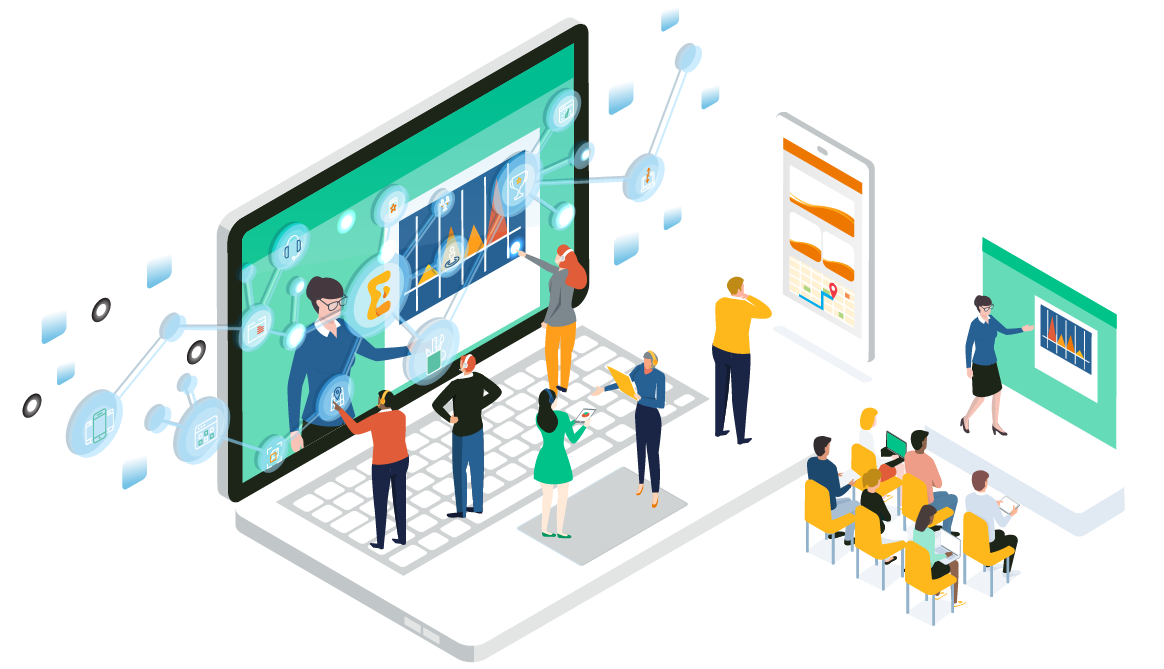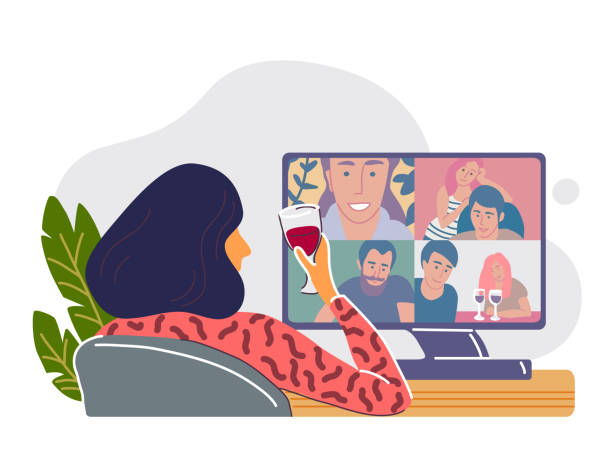Let’s dispel this myth right off the bat – virtual events are not easier to host, and while they can be more cost-effective than in-person events, they also present their own special set of challenges. Whether hosting conferences, symposiums, career fairs, or even roundtable discussions – you have a lot to determine before you even begin to hit the road running. In some ways, 2020 forced all of us to get creative, think outside of the box, and find ways to connect virtually. As a result, you saw an onslaught of virtual conference platforms touting the best interaction and networking tools around – and then you saw the price tag. Woof. SO how do you go about planning a successful virtual event with a budget in mind? Scoot closer…we’ll spill the tea on what we learned, what our challenges were along the way, and how our recent virtual conference was the talk of the Association right from the get-go.
Create A Solid Foundation & Game Plan
As with in-person events, you have to start with a rough plan of what you hope to accomplish. Our “Why” was to provide the same superior education and experience DirectEmployers Annual Meeting & Conferences (DEAMcon) are known for offering and then translating that to online learning. After surveying our leadership team and Board of Directors, we were able to identify our non-negotiables quickly:
- Livestreamed sessions
- Virtual exhibit hall
- Forum for attendee conversation and chatter
- Accessible from varying devices – computer, phone, and tablet
Sounds easy, right? First thing’s first…
Choose a Virtual Hosting Platform
Setting our game plan allowed us to go out and identify an online event platform that checked the box for each of our non-negotiables and work quickly to set up demos for each platform. From the highly produced, high dollar to the new-to-market solutions, we scoured the internet to find our Goldilocks – and luckily, we found just that. For the past three or four years, we’ve utilized an amazing conference app and luckily this tool, which we were already familiar with, had expanded its capabilities and entered the online event space. While many of these platforms came with a hefty price tag, our event was priced just right for our nonprofit-sized budget – and didn’t skimp on the bells and whistles!
The Three A’s of Event Planning: Agenda, Arrangement & Audience

Next Up: Arrangement. You’ve chosen the format to be virtual, but what should your conference programming look like – and what is your projected attendance? This goes hand-in-hand with your agenda planning but still a key component to consider. For example, if your audiences is projected to be 300, and you offer plenary sessions only, you stand to pack the house for each presenter, whereas if you offer three concurrent workshops, you run the risk of segmenting your audience too much, leaving some presenters feeling slighted. Spoiler alert: we chose the route of packing the house and providing less content, but with more impactful sessions!
Finally: Audience. Take a pulse on your audience and location. Just like remote work, virtual events open the door for increased audience size, but you need to be mindful of where that audience is concentrated. For example, DirectEmployers is a trade-based association whose Members sit in time zones scattered about the U.S.; therefore, we needed to be mindful of not offering sessions too early to accommodate our west coast audience. Remember that survey I mentioned earlier? This came in handy because our Board was able to provide guidance on conference length, giving us a good benchmark on time. After all was said and done, we settled on a five-afternoon conference, taking place from 1:00 pm – 5:00 pm ET. That allowed us flexibility for entertainment opportunities before and after conference sessions.
Promote the Event
Here’s where your calendar comes in handy. Set deadlines for yourself and follow those deadlines to a T. Each year, we start at the conference dates and work our way backward to the present, filling in emails, social posts, blog posts, press releases, SMS messages, personal invites, community announcements, and more to ensure a mindful approach to event messaging. For virtual events, you can guarantee later registration timelines since no travel is required, so definitely remember to account for that if you plan on doing any pre-event shipments.
Pro Tip: First class mail allows for fast, affordable shipments, but the catch is the package weight needs to be under 13 oz. Our pre-event packages contained a letter to attendees, full-size printed program, Passport to Prizes guide, conference t-shirt, and branded blue light blocking glasses – all weighing in at under 13 oz!
Practice & Prepare – You Will Encounter Tech Issues

As part of the preparation and learning process, we also hosted a Mock-DEAMcon for internal staff, which allowed us to have a birds-eye view of potential problems attendees and presenters would encounter, and also to learn the ins and outs of the platform for ourselves. We tested live-streamed sessions, Zoom integrations, and more to ensure we had all our I’s dotted and T’s crossed when it came time for our official conference dates.
Another pro tip I’ll share, and I can’t stress this enough, set up pre-conference calls with your presenters to ensure they are comfortable using the online event platform. You never know who will encounter a problem the day of, and this will allow you to move to Plan B quickly and with less stress.
Promote Engagement & A Place for Chatter

Incentivizing conversation, connectivity, and general engagement is another key way we were able to encourage attendees to network. For example, in our virtual exhibit hall, we offered points to attendees for visiting, which could be redeemed for branded swag post-event. If they visited all of our event sponsors and completed a short online form, they were entered for a chance to win a grand prize – Apple AirPod Pros…because who doesn’t need a little noise-canceling while working remotely?
Mix It Up with Entertainment: In our case, literally…
In-person events come with the opportunity to bump into old friends and new faces and connect over drinks or dinner – so recreating that experience online took some careful consideration. While we couldn’t guarantee the random encounters, we were able to lend the entertainment factor to our conference in the form of virtual happy hours and live-streamed yoga classes from our favorite local studio. For our five-day virtual event, we offered mixology and trivia happy hours to stimulate conversation and connection; and then, on the opposite days, offered live streamed yoga classes for all levels prior to the start of the event – all of which generated conversation and engagement!
I am by no means an expert in event planning and still have a lot to learn, but hopefully, our ideas and straightforward approach to online event planning can help you create a memorable experience for your next adventure. One thing’s for certain: it’s important to tackle each component of planning step-by-step and start with a solid framework you can build from. With events in general, the details can make a huge impact!
Cheers!


